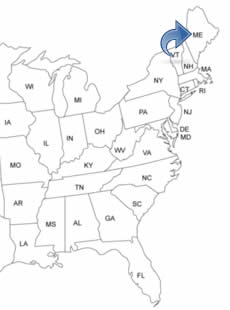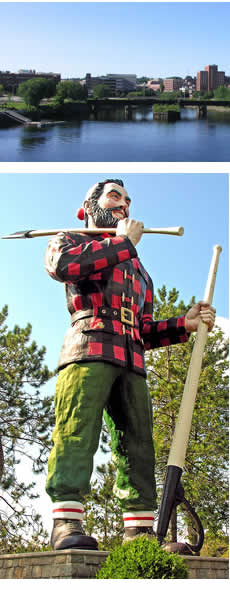MAINE PEOPLE SEARCH!
- ✔ Contact Info
- ✔ Phone Numbers
- ✔ Criminal Records
- ✔ Income Info
- ✔ Neighbors
- ✔ People's Age
- ✔ Property Ownership
- ✔ And Much More
Bangor, Maine
Bangor is located in the southcentral part and is the third largest city in the U.S. State of Maine. Bangor is mentioned in the song "King of the Road" and it is a friendly city that is filled with excitement, opportunity, and activity. Bangor's largest Italianate style mansion (the William Arnold House of 1856) is the home to the author Stephen King. Bangor has many cultural facilities, including the University of Maine. Bangor is the second safest city in the United States.
To See And To Do In Bangor
- Bangor Museum & Center for History
- Maine Discovery Museum
- University of Maine Museum of Art
- Cascade Park
- The Bangor Waterfront
- Playing Golf
- Rolland F. Perry City Forest
- The Thomas Hill Standpipe Water Tower
- Downtown
History Of Bangor - Timeline
In 1524, the cartographer and explorer Esteban Gómez, from Portugal, came to the area and was the first European to visit the land where Bangor now is. In 1604, the French explorer Samuel de Champlain established a colony and explored the Penobscot River and the area at today's Bangor.
The British-American settlement started in 1769 when Jacob Buswell, his wife, and their nine children settled. In 1770, Jacob Buswell's brother Stephen and his wife arrived together with Caleb Goodwin, his wife, and their eight children. In 1772, there were 12 families living in Bangor. Fishing, the lumber business, and fur trading drew the early settlers to the area. Bangor was incorporated in 1791 and 567 people now lived there.
In 1800, the first post office was established. The court house was built in 1812. In 1815, Peter Edes began the publication of the first newspaper, named the Bangor Weekly Register. The first bank was established in 1818 and the Maine Charity School in 1819. In 1833, the Hammond Street Congregational Church was built.
Bangor received her city charter in 1834. In 1855, the St. John's Catholic Church was built. In 1856 a large fire destroyed the sheriff's office, 10 downtown businesses, and 8 houses. The Bangor Public Library was founded in 1883. In 1889, the Bangor Daily News was published. The Bangor Symphony Orchestra was founded in 1896. In 1897, the Thomas Hill Standpipe was built to help regulate Bangor's water pressure in the downtown.
In 1900, nearly 22,000 people lived in the city.
In 1911, a large fire destroyed the Downtown Bangor. The Post Office, the Custom House, and Norumbega Hall were lost, along with the three buildings of Bangor High School and the Bangor Public Library. In total, 285 private homes, 100 businesses, and 6 churches were destroyed. In 1920, the Opera House was built. In 1931, the first regular air passenger service began from Bangor International Airport. In 2001, the Maine Discovery Museum opened.

